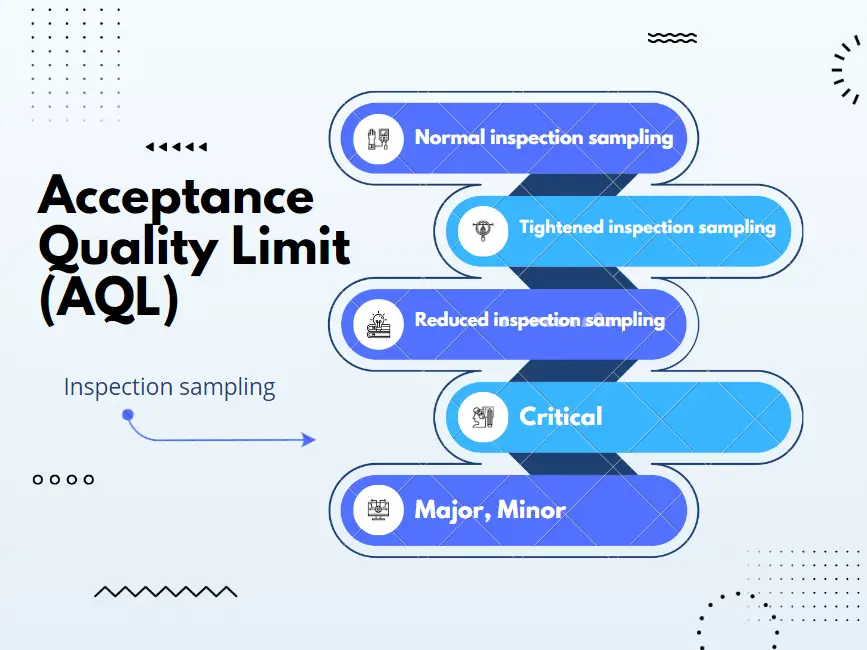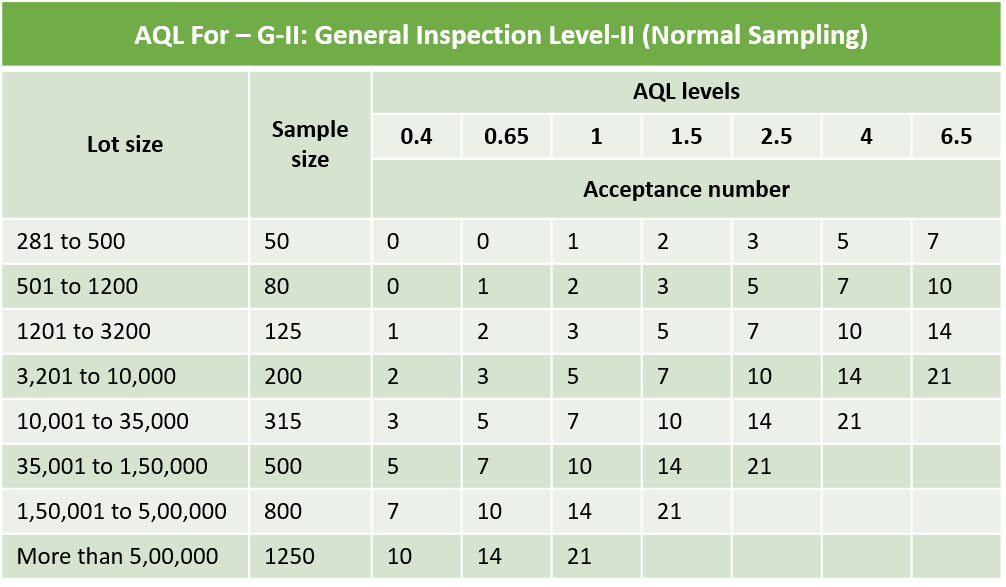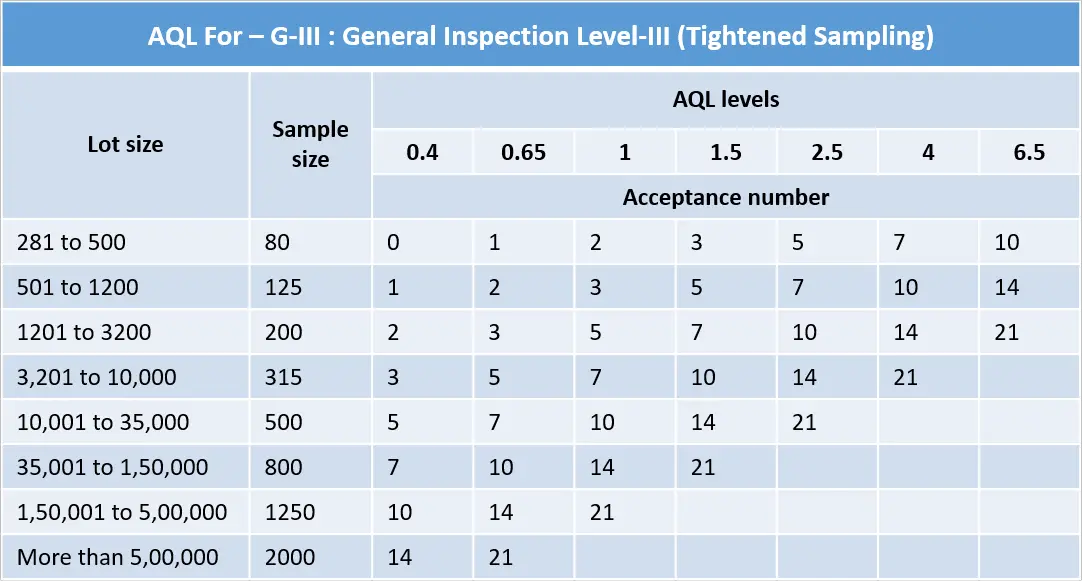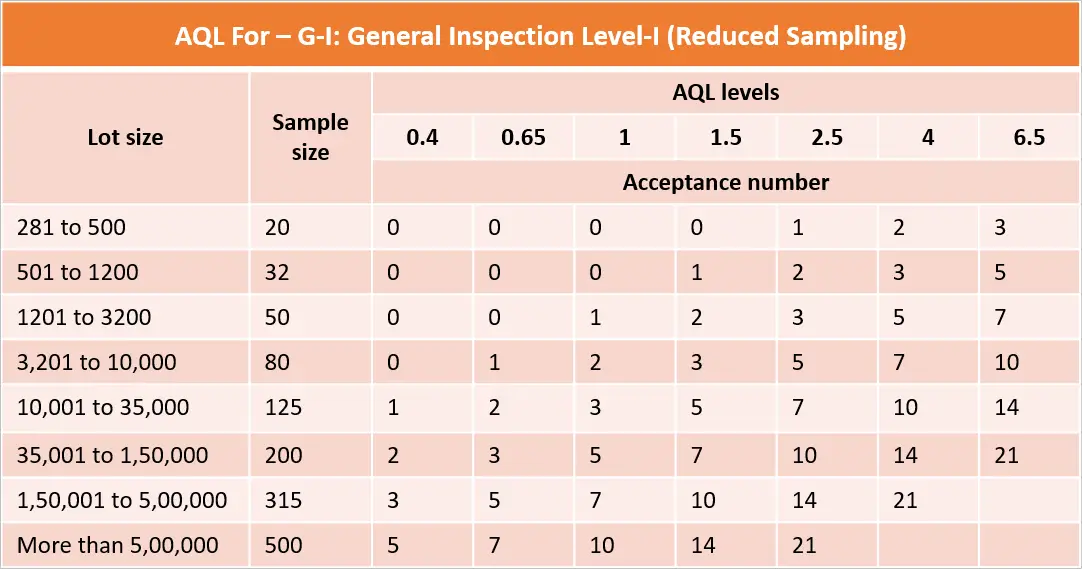The Acceptance Quality Limit (AQL) is defined in ISO 2859 as the “quality level that is the worst tolerable.” The AQL tells you how many defective components are considered acceptable during random sampling quality inspections.

Acceptance Quality Limit (AQL) was developed during World War II by Harold F. Dodge and others working with the US Army with the title MIL-STD-105. Then further revised to MIL-STD-1916, “DoD Preferred Methods for Acceptance of Product” and ANSI/ASQ Z1.4, “Sampling Procedures and Tables for Inspection by Attributes”.
AQL (Acceptable Quality Limit) Sampling is a method widely used to define a production order sample to determine if the entire product order has met the client’s specifications. Your inspection report will clearly state whether your production has passed or failed your selected Acceptable Quality Tolerance level.
The AQL guideline consists of three inspection sampling levels:
- GI: General Inspection Level-I (Reduced inspection sampling)
- GII: General Inspection Level-II (Normal inspection sampling)
- GIII: General Inspection Level-III (Tightened inspection sampling)
Based on the inspection types (Normal or Tightened or Reduced) sampling size can be determined.
Generally, the three types of defects are interpreted in the following ways:
- Critical defects: a defect that fails to meet mandatory regulations and affects the safety of consumers.
- Major defects: a defect that leads to product failure and reduction of product’s usability.
- Minor defects: a defect that shows deviation from quality standard but is not likely to reduce the usability of the product.
Further AQL levels can be classified as:
- 0.4 : AQL level 0.4 means the acceptable level of major defective goods is 0.4 % of the total order quantity.
- 0.65 : AQL level 0.65 means the acceptable level of major defective goods is 0.65 % of the total order quantity.
- 1: AQL level 1 means the acceptable level of major defective goods is 1 % of the total order quantity.
- 1.5: AQL level 1.5 means the acceptable level of major defective goods is 1.5% of the total order quantity.
- 2.5 : AQL level 2.5 means the acceptable level of major defective goods is 2.5% of the total order quantity.
- 4 : AQL level 4 means the acceptable level of major defective goods is 4 % of the total order quantity.
- 6.5: AQL level 6.5 means the acceptable level of major defective goods is 6.5% of the total order quantity.
Acceptance number
During the AQL sampling process, select the inspection level like Normal or Tightened or Reduced and AQL levels like 0.4, 0.65, 1, 1.5, 2.5, 4 and 6.5.
As per following tablets based on Lots size and selected inspection and AQL levels you will get an Acceptance number for defect or non conformity.



After inspection if defect or non conformity is within acceptance number then lots pass the AQL criteria or if defect or non conformity is beyond the acceptance number then lots fails the AQL criteria